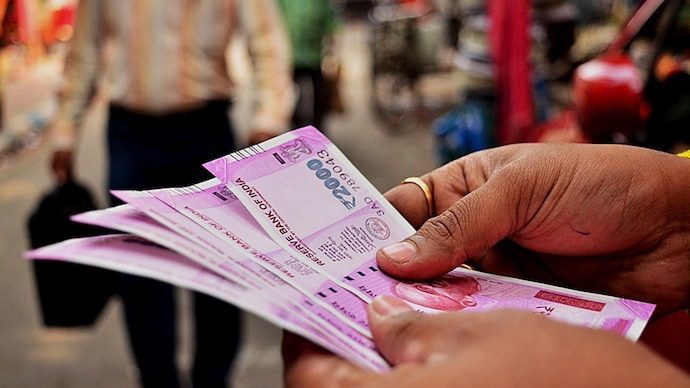In a statement, the central bank disclosed, "Based on the data received from the banks, the total value of Rs 2,000 bank notes that have been returned from circulation since the announcement on May 19 stands at a staggering Rs 2.72 lakh crore as of June 30, 2023." Consequently, the amount of Rs 2,000 notes remaining in circulation by the end of business on June 30 was reported to be approximately Rs 0.84 lakh crore.
Further examination of the data revealed that a substantial 76% of the Rs 2,000 banknotes in circulation as of May 19, 2023 have now been returned. The RBI's analysis, based on information collected from major banks, indicates that out of the total Rs 2,000 denomination banknotes that have been received back from circulation, an impressive 87% consists of deposits, while the remaining 13% has been exchanged into banknotes of other denominations.
This data sheds light on the response of individuals and entities to the RBI's decision to withdraw the Rs 2,000 notes. The significant portion of these notes being returned through deposits signifies the confidence and compliance exhibited by the general public. It also highlights the effectiveness of the banks and financial institutions in managing the exchange process and accommodating the requirements of their customers.
The implications of this massive return of Rs 2,000 notes to the banking system extend beyond the mere statistics. It underscores the evolving dynamics of currency circulation in the country and the influence of monetary policies on the behavior of individuals and economic entities. The RBI's decision to withdraw these high-denomination notes was likely driven by a multitude of factors, including the need to curb illegal activities, combat counterfeiting, and promote a more balanced currency distribution.
As the RBI continues to monitor and analyze the progress of this currency withdrawal initiative, it will be interesting to observe the long-term impact on the financial landscape of the nation. The return rate of 76% signifies a significant shift in the availability and usage of the Rs 2,000 denomination notes, prompting further considerations and deliberations by policymakers and financial experts.
In conclusion, the RBI's revelation regarding the return rate of 76% for the Rs 2,000 notes presents a remarkable development in the Indian financial system. The data collected from major banks reflects a considerable proportion of these notes being returned through deposits, indicating a positive response from the public and effective coordination between the central bank, commercial banks, and individuals. This ongoing process will undoubtedly have profound implications for the economy and monetary policies in the future.





0 Comments